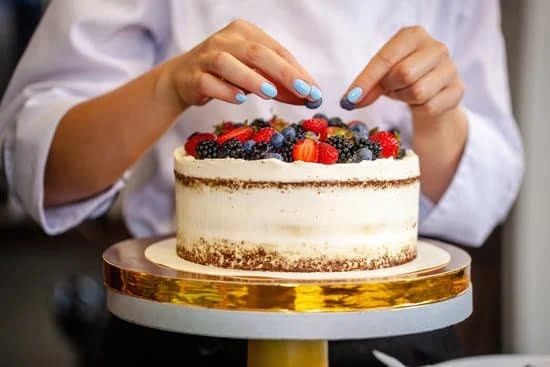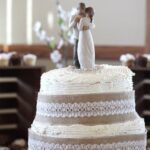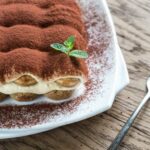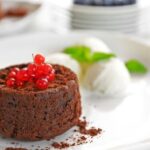Freezing cakes before decorating them has become an invaluable technique for both amateur and professional bakers alike. Not only does it save time, but it also allows for more intricate designs and flavors to be achieved.
However, the process of freezing cakes requires proper storage and adherence to guidelines in order to maintain their quality. In this article, we will explore why freezing cakes before decorating is a great time-saving technique, as well as discuss the importance of proper storage and guidelines for freezing cakes.
When it comes to baking and decorating cakes, time is often a precious commodity. Freezing cakes can significantly alleviate some of the time constraints associated with cake preparation and decoration. By preparing the cake in advance and freezing it, decorators can focus solely on the creative aspects when it comes time to decorate. This not only streamlines the process but also allows for more meticulous attention to detail.
Proper storage and guidelines play a crucial role in maintaining the quality of frozen cakes. Cooling the cake thoroughly before freezing is essential to prevent condensation, which can lead to freezer burn or a loss of texture.
Additionally, proper wrapping and sealing techniques should be implemented to keep out any unwanted odors or flavors from infiltrating the cake during storage. Following these guidelines ensures that when it’s time to decorate, the cake will still taste fresh with its desired texture intact.
How to Properly Prepare a Cake for Freezing
Step-by-step instructions for cooling the cake before freezing
Before freezing a cake, it is important to ensure that it is properly cooled. This prevents condensation from forming inside the packaging and maintains the texture of the cake. Here are some step-by-step instructions for cooling a cake before freezing:
- Remove the cake from the oven and let it cool in the pan for about 10-15 minutes. This allows it to firm up slightly and makes it easier to remove from the pan without breaking.
- Carefully remove the cake from the pan and place it on a wire rack to cool completely. It is crucial to cool the cake completely as any residual heat can cause condensation when frozen.
- Once cooled, level any domed or uneven parts of the cake using a serrated knife or cake leveler. This ensures that the cake freezes evenly and eliminates any potential air gaps during storage.
- For larger cakes, consider dividing them into smaller layers for easier handling during freezing and thawing processes. Place parchment paper or plastic wrap between each layer to prevent sticking.
Tips for wrapping and sealing the cake properly to prevent freezer burn
Properly wrapping and sealing a cake before freezing not only prevents freezer burn but also helps maintain its freshness and flavor. Here are some tips for wrapping and sealing a cake:
- Start by allowing your cake to cool completely before wrapping it. Applying wrap or a seal while warm can cause condensation, leading to freezer burn.
- Wrap individual layers or whole cakes tightly with several layers of plastic wrap or aluminum foil. Make sure there are no gaps or exposed areas where air can seep in.
- To further protect your frozen cake, place it in an airtight container or resealable plastic bag after wrapping it with plastic wrap or aluminum foil.
- Label your wrapped cake with its name and freezing date using a permanent marker. This makes it easier to identify and keeps track of how long the cake has been frozen.
By following these steps for cooling, wrapping, and sealing your cake properly, you can ensure that it freezes efficiently and maintains its quality until you are ready to decorate it.
Duration Guidelines for Freezing Cakes
Answering the Key Question: How Long Can You Freeze a Cake Before Decorating It?
One of the most important aspects to consider when freezing a cake for decorating is how long it can be safely stored in the freezer. The duration guidelines for freezing cakes vary depending on several factors, including the ingredients used, the type of cake, and any fillings or decorations involved.
In general, most cakes can be frozen for up to 2-3 months before they start to lose their quality. This timeframe ensures that the cake remains moist and flavorful when thawed. However, it’s essential to note that not all cakes freeze equally well. For example, butter-based cakes tend to hold up better in the freezer compared to sponge or chiffon cakes.
The Impact of Ingredients and Texture on Freezing Timeline
The ingredients and texture of a cake play a crucial role in determining how long it can be frozen before decorating. Cakes with heavier textures, such as pound cakes or cheesecakes, tend to freeze well because their denser structure helps retain moisture during freezing.
On the other hand, light and delicate cakes like sponge or chiffon cakes may require extra care when freezing. These types of cakes have a higher moisture content and can become dry or lose their lightness if left in the freezer for too long. It’s recommended to freeze these types of cakes for no longer than 1-2 months for optimal results.
Considerations for Fillings, Frostings, and Decorations
When deciding how long to freeze a cake before decorating, it’s essential to consider any fillings, frostings, or decorations that may impact its freezing timeline. Cakes with perishable fillings like fresh fruit or cream are best consumed within 1-2 months after freezing as they may not withstand longer freezing periods.
Similarly, whipped cream frostings and delicate buttercream decorations may suffer from texture changes when frozen for an extended time. It’s advisable to freeze cakes with these types of frostings and decorations for no more than 1-2 months.
Overall, it’s crucial to evaluate the ingredients and components of your cake when determining how long to freeze it before decorating. By understanding these factors, you can ensure that your cake remains delicious and visually appealing after it has been thawed.
Factors to Consider When Deciding How Long to Freeze a Cake
When it comes to freezing cakes, the duration of freezing can vary depending on several factors. It is important to take into consideration the type of cake, its ingredients, and the fillings, frostings, and decorations used before deciding on how long to freeze it. By understanding these factors, you can ensure that your cake maintains its quality and taste even after being frozen.
The type of cake plays a crucial role in determining the freezing duration. Butter-based cakes generally have a longer freezing timeline compared to sponge cakes or cheesecakes. This is because butter-based cakes tend to have more moisture and fat content, which helps preserve their texture when frozen. Sponge cakes, on the other hand, may become dry and lose their sponginess if frozen for too long. Cheesecakes typically freeze well due to their dense and creamy texture.
In addition to the type of cake, you should consider the fillings, frostings, and decorations used. Cakes with simple buttercream or ganache fillings and frostings are more suitable for longer periods of freezing as they have a higher fat content which helps prevent freezer burn. However, if your cake has perishable fillings such as cream cheese or fresh fruit toppings, it is recommended to freeze it for a shorter period to maintain their freshness.
| Type of Cake | Freezing Duration |
|---|---|
| Butter-based Cake | Up to 3 months |
| Sponge Cake | Up to 1 month |
| Cheesecake | Up to 6 months |
By considering these factors and guidelines, you can make informed decisions about how long to freeze your cakes before decorating them. Remember to properly wrap and seal the cakes to minimize the risk of freezer burn, and always store them in airtight containers or freezer-safe bags. With proper freezing techniques, you can ensure that your cakes are fresh and delicious for when it’s time to decorate and enjoy them.
Proper Thawing Techniques for Decorated Cakes
Thawing a frozen, decorated cake requires careful consideration to ensure that the cake maintains its taste, texture, and overall appearance. Here are some effective techniques for safely thawing a frozen cake before decorating:
- Refrigerator Method: This is the most common and recommended method for thawing decorated cakes. Simply transfer the frozen cake from the freezer to the refrigerator. Allow it to thaw slowly in the fridge for 24 to 48 hours, depending on the size and thickness of the cake. Thawing in the refrigerator helps prevent condensation from forming on the cake’s surface, which can ruin its decorations.
- Counter Method: If you’re short on time, you can use the counter method to thaw a decorated cake. Place the frozen cake on a serving plate or tray at room temperature. The countertop should be clean and free from direct sunlight or any heat sources that may cause uneven thawing. Keep in mind that this method is best suited for smaller cakes or single-layered designs.
- Cold Water Bath Method: In cases where you need to quickly thaw a small, decorated cake, using a cold water bath may be an option. Fill a basin or large container with cold water and place the tightly wrapped frozen cake in it, ensuring that no water gets inside the packaging. Change the water every 30 minutes to maintain its cold temperature until the cake is fully thawed.
To prevent condensation from ruining your decorations during thawing, it’s crucial to adhere to these additional tips:
- Leave the cake wrapped in its original packaging while it thaws.
- Once completely thawed, allow some extra time at room temperature before unwrapping and decorating.
- If condensation forms on the packaging during thawing, gently pat it dry with paper towels before opening.
- If you want to add additional decorations after thawing, make sure the cake is fully cooled before proceeding.
By utilizing these proper thawing techniques, you can ensure that your decorated cakes retain their quality and visual appeal. Taking the time to thaw a frozen cake properly will result in an easier and more successful decorating process.
Assessing Cake Quality after Freezing
After freezing a cake, it is important to assess its quality before proceeding with the decorating process. Freezing can potentially affect the taste, texture, and overall appearance of the cake, so it is crucial to evaluate its condition. Here are some key factors to consider when assessing the quality of a frozen cake:
- Taste: Begin by tasting a small portion of the thawed cake to check if there are any undesirable changes in flavor. Freezing may cause certain cakes to develop a slightly different taste due to changes in moisture and texture. If the cake tastes off or has an unpleasant freezer-burned flavor, it may not be suitable for decorating.
- Texture: Examine the texture of the cake after thawing. Some cakes may become denser or dryer as a result of freezing, while others could retain their original texture quite well. Look for any signs of crumbly or rubbery consistency, which could indicate that the cake has suffered from freezer damage.
- Appearance: Evaluate the overall appearance of the thawed cake. Check for any significant changes in color or shape that would make it visually unappealing for decoration purposes. Additionally, inspect for any frost or ice crystals on the surface of the cake, as this could be a sign of improper storage or insufficient wrapping.
If you find that your frozen cake does not meet your expectations in terms of taste, texture, or appearance, you may need to make adjustments before proceeding with decorating. This could involve simple fixes such as adding extra moisture with syrup or soaking liquid for dry cakes or trimming away any discolored portions when necessary.
Ultimately, assessing the quality of a frozen cake allows you to make informed decisions about whether adjustments are needed before moving forward with decorating. By ensuring that your cake meets your desired standards in terms of taste, texture, and appearance, you can create stunning decorations that will impress both visually and gastronomically.
Storing Frozen Cakes for Extended Periods
When it comes to freezing cakes for decorating, proper storage is essential to maintain the cake’s quality over an extended period. Whether you are planning ahead for a special occasion or simply want to have a backup cake on hand, storing frozen cakes properly is crucial. Here are some best practices to ensure that your cakes stay fresh and delicious even after months in the freezer.
First and foremost, it is important to wrap your cake tightly before placing it in the freezer. Start by allowing your cake to cool completely before freezing. This will prevent any excess moisture from being trapped inside the wrapping and causing potential damage to the cake during freezing. Once cooled, gently wrap the cake in several layers of plastic wrap, making sure to securely seal all edges. Alternatively, you can place the wrapped cake in an airtight container.
Labeling your frozen cakes is also a useful practice when storing them for an extended period. Include the date of freezing on the label so that you can easily keep track of how long each cake has been stored.
Additionally, if you have multiple cakes in the freezer, it is helpful to create a list of what flavors and designs each one corresponds to. This way, when it comes time to decorate and serve them, you can easily identify which cake is which.
Another important consideration when storing frozen cakes for longer periods is ensuring that they are not exposed to any strong odors or flavors from other foods in the freezer. This can be accomplished by storing your cakes on their own shelf or even placing them inside an additional layer of protection such as a resealable plastic bag.
By following these storage guidelines, you can ensure that your frozen cakes remain fresh and tasty until you are ready to decorate them. Properly wrapping and sealing the cakes prevents freezer burn while labeling and isolating them ensures easy identification and preserves their intended flavors.
Expert Tips and Tricks for Successful Cake Freezing and Decorating
When it comes to freezing cakes for decorating, there are some expert tips and tricks that can help ensure success. Professional bakers and experienced cake decorators have honed their skills over the years, and they have valuable insights to share. Here are some expert tips and tricks for successful cake freezing and decorating:
- Use a sturdy cake recipe: When choosing a cake recipe to freeze, opt for a sturdy one that can withstand the freezing process without losing its texture or shape. Butter-based cakes, like pound cakes or carrot cakes, tend to freeze well. Sponge cakes may be more delicate and may require extra care during freezing.
- Wrap the cake properly: Properly wrapping the cake is essential for preventing freezer burn and maintaining its freshness. Start by cooling the cake completely before wrapping it tightly in several layers of plastic wrap or aluminum foil. Be sure to seal any seams or openings tightly to prevent air from getting in.
- Freeze without decorations: If you plan on adding intricate decorations to your frozen cake later on, it’s best to freeze the cake without any frosting or decorations. This will prevent them from becoming damaged or losing their shape during thawing.
- Thaw slowly in the fridge: When it’s time to thaw your frozen cake, do so slowly in the refrigerator overnight. This gradual thawing process helps preserve the cake’s moisture and prevents condensation from forming on its surface.
- Test for freshness: Before decorating your thawed cake, make sure it is still fresh and suitable for decorating by doing a taste test. If the flavor or texture has significantly changed after freezing, you may need to adjust your decoration plans accordingly.
Professional bakers also recommend experimenting with unique designs that work well with frozen cakes. For example, ombre designs with layered frostings can add depth and visual interest to a frozen cake’s appearance.
Remember that practice makes perfect when it comes to freezing cakes for decorating. Don’t be afraid to try new techniques and learn from any mistakes along the way. By following these expert tips and tricks, you can achieve stunning decorations while taking advantage of the time-saving benefits of freezing cakes.
Conclusion
In conclusion, freezing cakes before decorating them is a fantastic time-saving technique that can greatly benefit both amateur bakers and experienced cake decorators. By properly preparing the cake for freezing, wrapping and sealing it carefully, and following duration guidelines based on the cake’s ingredients and texture, you can ensure that your cakes retain their quality and taste even after being frozen. Thawing techniques should also be considered to preserve the cake’s texture and prevent condensation.
Assessing the quality of a frozen cake is important before proceeding with decorating, as there may be some changes in taste, texture, or appearance. However, with proper judgment and adjustments if needed, a frozen cake can still be suitable for decorating. Long-term storage in the freezer requires best practices to preserve the cake’s quality over time.
Remember to seek advice from experts and experienced bakers for tips and tricks on successful cake freezing and decorating. Their insights can offer valuable guidance and creative ideas for unique designs that work well with frozen cakes.
Frequently Asked Questions
Is it OK to freeze cake before decorating?
Yes, it is perfectly fine to freeze a cake before decorating. Freezing the cake can actually make it easier to work with when it comes time to decorate. By freezing the cake, you are able to firm up the layers, reducing the risk of crumbling or cracking while applying frosting or decorative elements.
However, it is important to properly wrap and store the cake to prevent freezer burn and preserve its freshness. It is recommended to wait until the cake has completely cooled before wrapping and freezing it.
How long can you freeze a cake before frosting it?
You can typically freeze a cake for up to two to three months before frosting it. However, it is essential to properly wrap and store the cake in an airtight container or tightly sealed plastic wrap to maintain its quality for an extended period of time.
Freezing cakes for too long may affect their texture and taste, so it’s best not to exceed the recommended time frame. To ensure optimal freshness, label your cake with the date it was frozen so that you can keep track of how long it has been stored in the freezer.
Can I bake a cake and freeze it to decorate later?
Absolutely! Baking a cake in advance and freezing it for later decoration is a convenient way to save time when you have a busy schedule or need to prepare multiple desserts ahead of an event. Once your baked cake has completely cooled, you can wrap it tightly with plastic wrap or place it in an airtight container before freezing.
Be sure that the wrapping is secure and there are no exposed areas that might allow air or moisture in, as this can lead to freezer burn or loss of moisture in the cake. When you’re ready to decorate your frozen cake, allow it to thaw at room temperature before adding any frostings or decorations. Thawing overnight in the refrigerator may also be an option depending on your specific timeline and needs.

Welcome to our cake decorating blog! My name is Destiny Flores, and I am the proud owner of a cake decorating business named Cake Karma. Our mission is to provide delicious, beautiful cakes for all occasions. We specialize in creating custom cakes that are tailored specifically to each customer’s individual needs and tastes.





